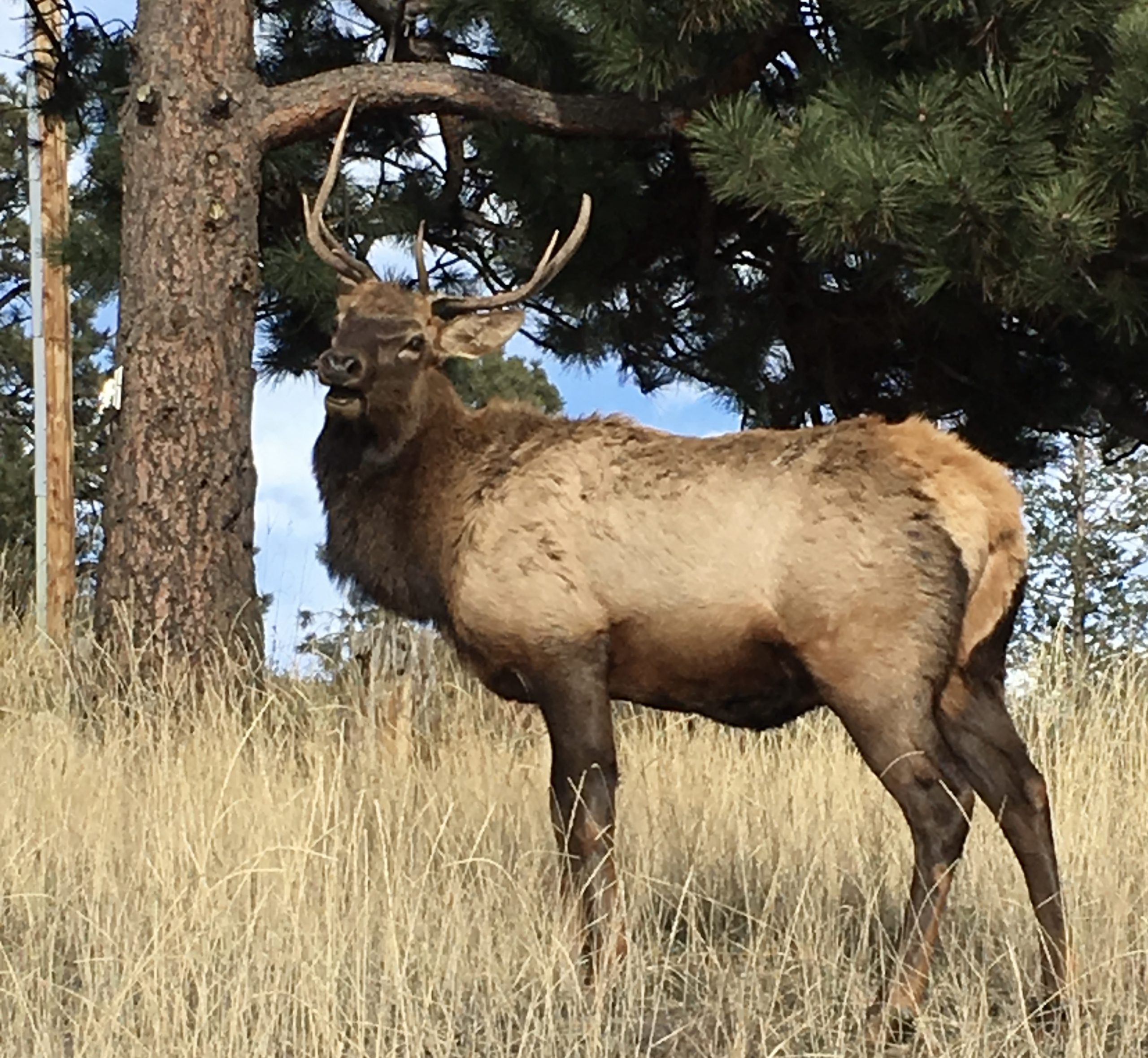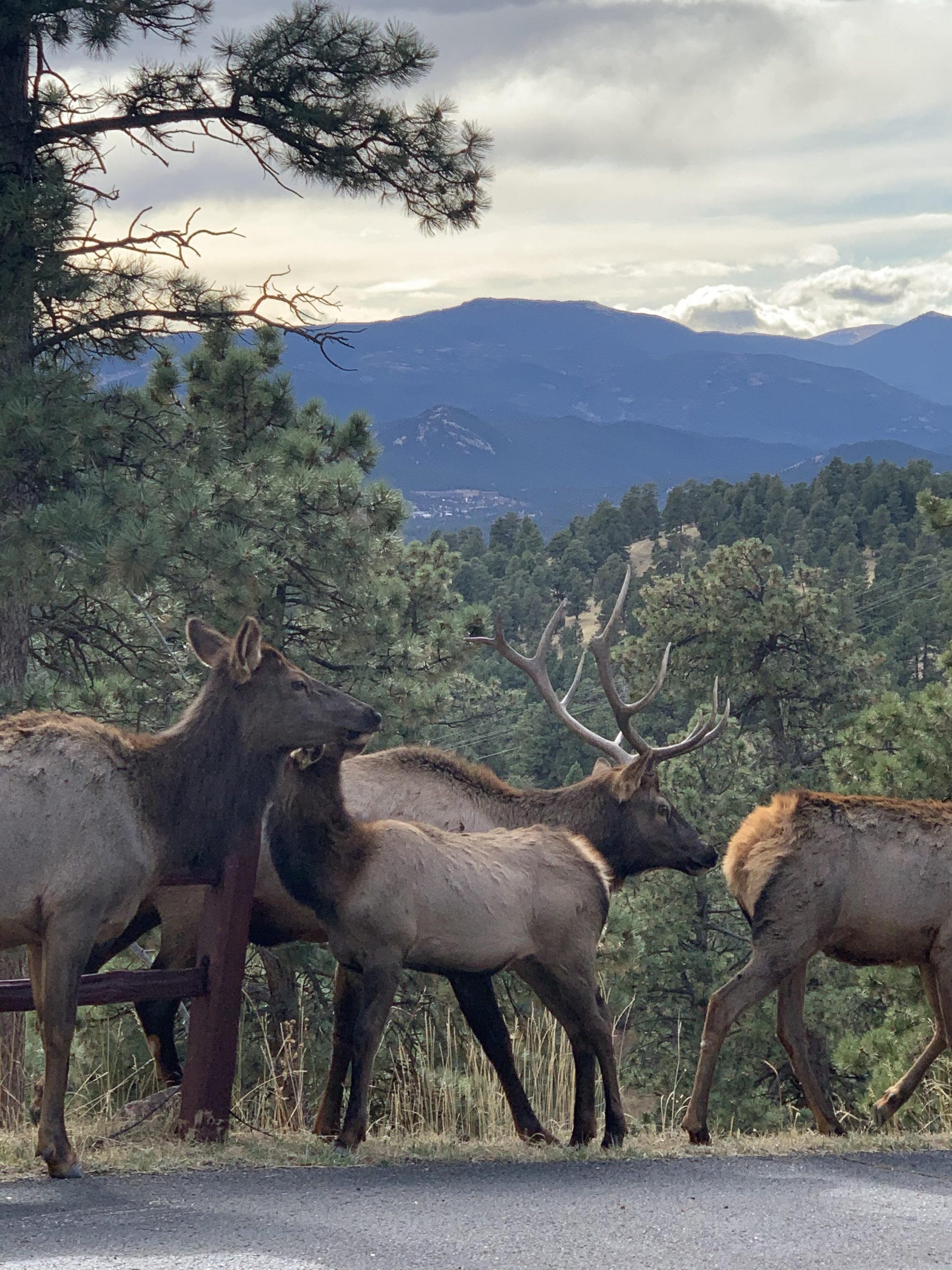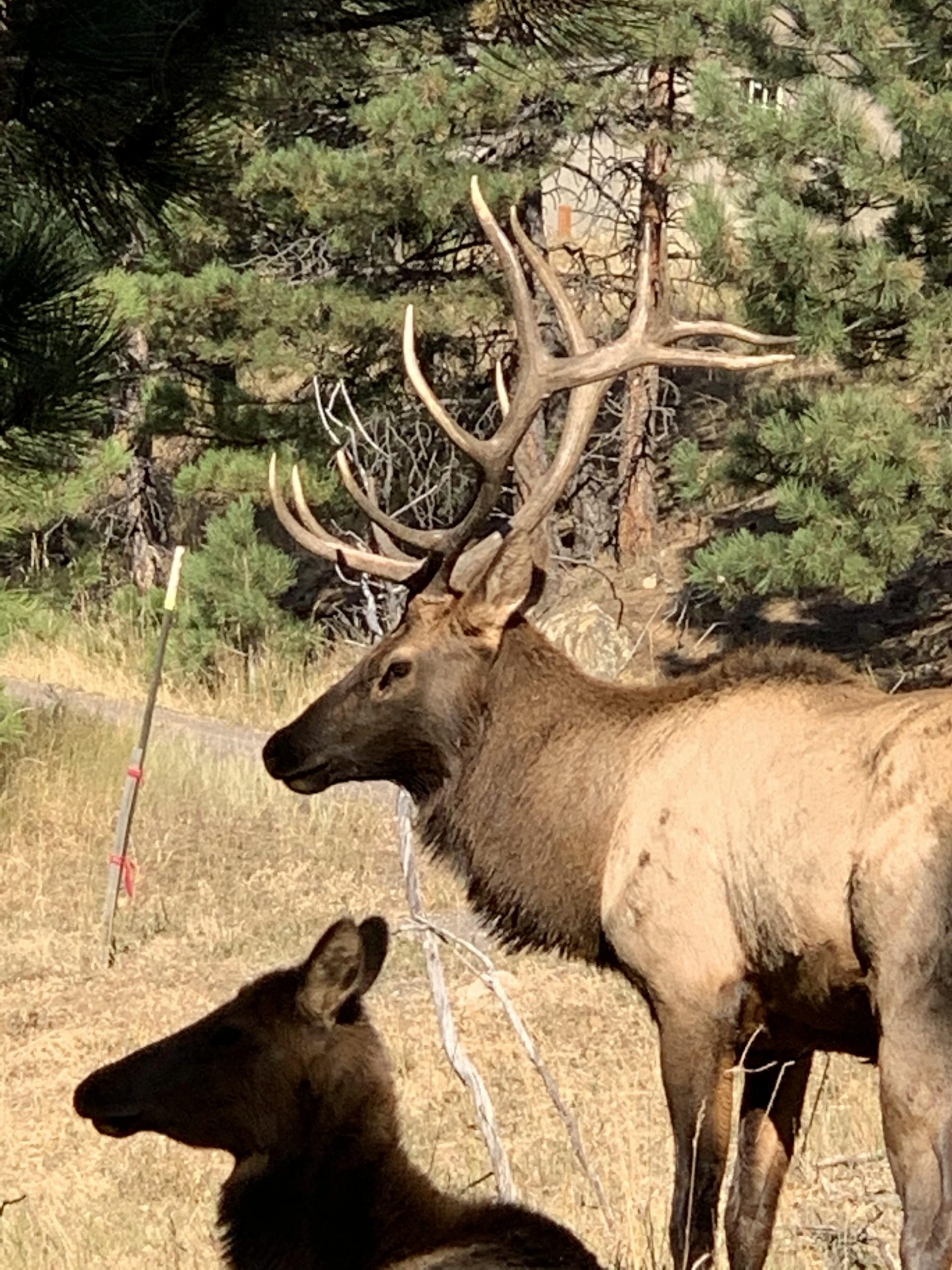
The elk rut, also known as the elk breeding season, typically occurs in the fall, primarily during September and October, in Colorado. The timing can vary somewhat depending on the specific location within Colorado and the weather conditions for that year. The rut is an exciting time for wildlife enthusiasts and nature lovers, as it’s when male elk, known as bulls, become more active and vocal in their pursuit of mating opportunities.
During the rut, you can observe various elk behaviors, including bugling (a loud, eerie call), herding of females (cows), and challenging of other bulls for dominance. This period provides a unique opportunity for wildlife photographers and tourists to witness and experience the natural behaviors of these magnificent animals.
 |
 |
 |
 |
Living in the foothills of Colorado provides residents with a unique opportunity to experience the elk rut season. The elk rut season typically occurs in the fall, usually from late August to early October, depending on the specific location and elevation within Colorado. During this time, elk engage in their annual mating rituals, which can be both fascinating and exhilarating to witness.
Here are some aspects of the elk rut season that residents in the foothills of Colorado might enjoy:
- Bugling: Male elk, known as bulls, produce a distinctive and haunting sound called bugling. This vocalization is used to assert their dominance, attract females (cows), and challenge other bulls. Hearing the bugling of elk echoing through the foothills is a memorable experience.
- Wildlife Viewing: The elk rut season is an excellent time for wildlife enthusiasts and photographers to observe these magnificent creatures up close. Many elk herds can be found in the foothills, making it easier for residents to spot them during this time.
- Scenic Beauty: Colorado’s foothills are known for their stunning landscapes, and the fall foliage adds an extra layer of beauty to the elk rut season. The changing leaves on the aspen and other trees provide a picturesque backdrop for elk viewing.
- Guided Tours: Some areas in Colorado offer guided tours and educational programs during the elk rut season. These tours can provide residents with insights into elk behavior and conservation efforts.
- Hiking and Outdoor Activities: The cooler fall weather in the foothills is perfect for outdoor activities like hiking and camping. Residents can combine their love for the outdoors with elk watching by exploring the many trails and parks in the region.
- Wildlife Conservation: Elk are an important part of Colorado’s ecosystem, and the rut season is a reminder of the state’s commitment to wildlife conservation. Residents may take pride in the efforts made to protect and manage these iconic animals.
However, it’s essential for residents and visitors to observe wildlife responsibly. Keep a safe distance from elk, avoid approaching them too closely, and never feed them. Elk are wild animals and should be treated with respect and caution.
Overall, living in the foothills of Colorado during the elk rut season can be a rewarding experience for nature enthusiasts and those who appreciate the natural beauty and wildlife of the region.
For visitors and destination trips, keep in mind that the exact timing of the rut can vary from year to year and across different regions of Colorado. To plan a visit and enjoy the elk rut season, you can check with the Colorado Parks and Wildlife department or local wildlife guides for the most up-to-date information on viewing opportunities and wildlife conservation efforts in the area.
- Rocky Mountain National Park: This iconic national park, located in north-central Colorado, is renowned for its diverse wildlife, and it’s one of the top places to witness the elk rut. The park offers numerous scenic viewpoints and wildlife-watching areas where you can observe elk engaging in their natural behaviors. LINK: Rocky Mountain National Park
- Estes Park: As the gateway to Rocky Mountain National Park, Estes Park is an excellent base for visitors looking to witness the elk rut. The town itself is known for its elk population, and you can often see these magnificent creatures grazing in open areas and even within the town limits. LINK: Estes Park
- Great Sand Dunes National Park and Preserve: Located in southern Colorado, this unique park offers a different perspective on elk viewing. While known for its stunning sand dunes, the park is also home to elk herds. During the rut season, you can witness elk in the grasslands and meadows near Medano Creek. LINK: Great Sand Dunes National Park
- Routt National Forest: This forest covers a significant portion of northwestern Colorado and is home to a thriving elk population. The areas around Steamboat Springs and the Mount Zirkel Wilderness within the forest are excellent spots for observing elk during the rut. LINK: Routt National Park
- Gunnison National Forest: Located in central Colorado, Gunnison National Forest is another prime location for elk viewing. The Elk Mountains and the West Elk Wilderness are particularly known for their elk populations. The town of Crested Butte, nestled in the Elk Mountains, is a great starting point for elk enthusiasts. Gunnison National Park
- San Juan Mountains: This mountain range in southwestern Colorado is home to a significant elk population. Areas such as the San Juan National Forest and the Weminuche Wilderness offer excellent elk viewing opportunities, especially during the rut season. LINK: San Juan Mountains and LINK: Weminuche Wilderness National Park
- Pike National Forest: Located just west of Colorado Springs, Pike National Forest is another area where you can spot elk. The South Platte River corridor and Rampart Range are known for elk activity, and this forest is relatively accessible from the Denver metropolitan area. LINK: Pike National Forest
Remember to check with local wildlife authorities or visitor centers for the most up-to-date information on elk behavior and viewing opportunities in these areas. Please also follow responsible wildlife viewing guidelines to minimize disturbance to the animals and ensure their protection.

 Facebook
Facebook
 X
X
 Pinterest
Pinterest
 Copy Link
Copy Link
